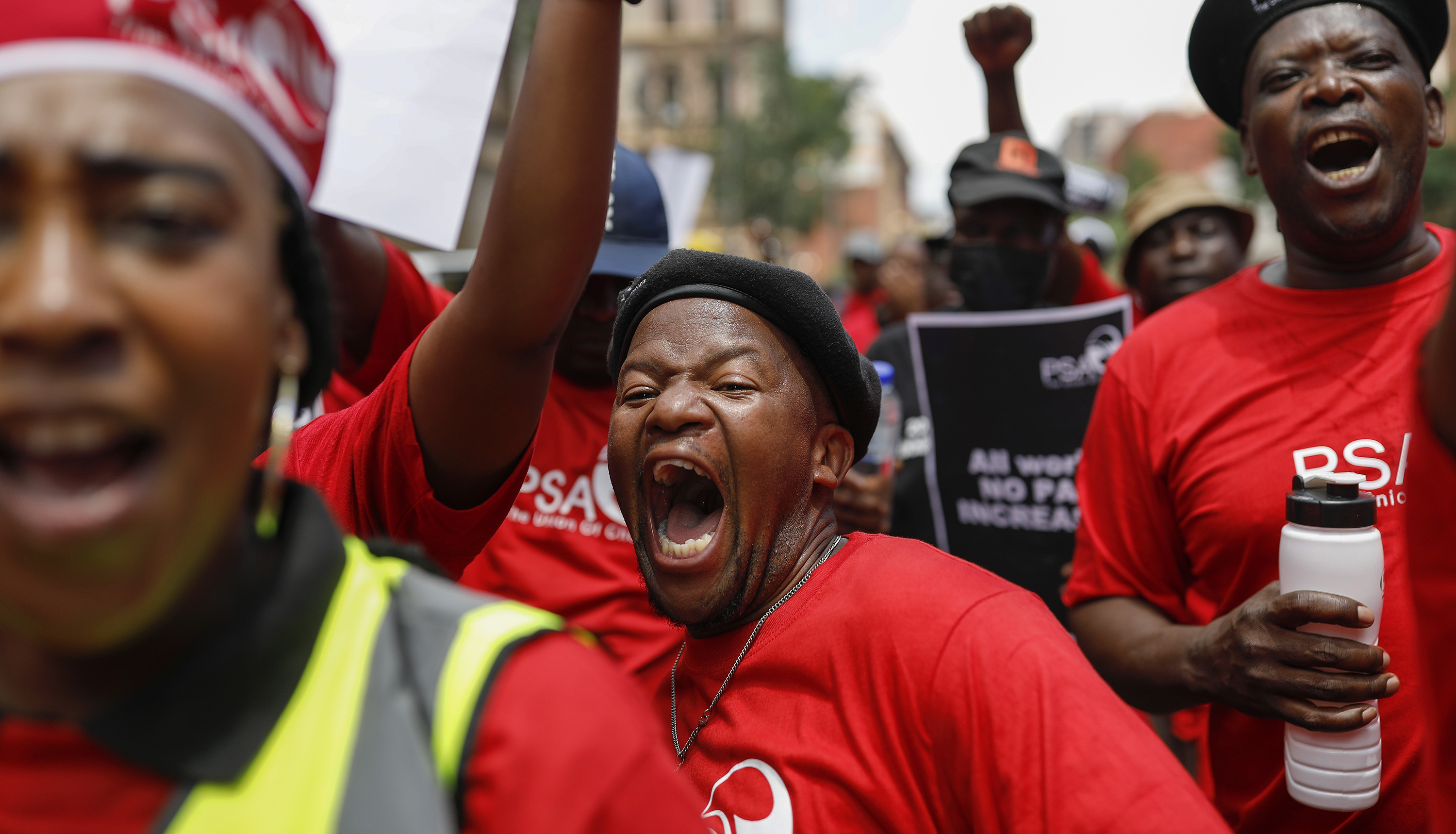Several statistics fascinate me whenever there are conversations about the pay of SA’s public servants.
They remain relevant considering that the government and trade unions representing public servants will soon head to the negotiating table for a 2025 pay deal.
The unions are already turning the screws on the government (and taxpayers) by asking for a 12% pay rise for all public servants, which is higher than the latest inflation rate of 4.6%.
Anyone au fait with public sector pay negotiations knows it involves a tango.
Trade unions usually start negotiations by tabling an absurd number to test what they can get away with. The government then pushes back with an offer it can afford. What the government can afford often upsets unions because it has been pared down. Then unions become upset and threaten to strike. Either party then caves in. This dance is expected in the coming weeks.
Now back to the statistics that fascinate me.
The government spends a lot of money to pay the country’s 1.3 million public servants, including teachers, police officers, doctors and nurses. Just this year, the government plans to spend R679.1-billion to compensate public servants, an amount that gobbles up 30% of the government’s total expenditure, which is set at R2.3-trillion. In other words, 30% of the government’s expenditure compensates just 2% of the population.
This is a problem. It means that government spending is regressive as paying public servants comes at the expense of pro-investment and growth measures (including building roads and other infrastructure).
SA’s public service is not large but it is unusually well paid. Underscoring this is a report commissioned a few years ago by Business Unity SA, which has benchmarked the pay of the country’s public servants against international norms SA teachers, alone, earn nearly 50% more than the Organisation for Economic Co-operation and Development average, and public servants are better paid than the median SA taxpayer. More recently, the National Treasury released more shocking figures. The number of public servants earning over R1-million per year has increased by 280% from a decade ago. There are 37,800 public servants in national and provincial governments earning above R1-million per year.
How did the cost of paying public servants get out of control, going from R154-billion in 2006 to R679.1-billion in 2024? The government has itself to blame because it settled on above-inflation pay increases for more than a decade, making public servants and trade unions accustomed to this largesse.
The year 2006 was a turning point.
At the time, the government reviewed its remuneration policy across all three spheres of the state (national, provincial, and local), and increased pay to attract and retain skilled individuals in the public sector, also preventing a brain drain. To do this, the government introduced a system called occupation-specific dispensation in 2008/9, which awarded skilled public servants, mainly doctors, significant increases in their basic pay. The system worked in the government’s favour: it hired more skilled medical professionals (doctors) than ordinary public servants, administrators and policymakers.
The main driver of the remuneration bill growth has not been the increase in the number of people hired by the state (1.2 million in 2006/7 versus 1.3 million in 2023/24). The driver is agreements in which basic pay has been adjusted annually at a rate higher than inflation, as well as rapid growth of employment benefits, especially medical aid and housing allowance.
Surprisingly, the government has been able to limit growth to the remuneration bill. Over the past few years, it has implemented a pay freeze and if increases have been granted, they have been kept close to the inflation rate or a few percentage points above. It should continue on this path of holding the line.
In the coming negotiations, the government should also return to striking a multiyear pay deal with unions, instead of returning to confidence-draining talks every year. Doing so will remove a layer of uncertainty that has eroded the credibility and outlook of public finances.
And as for public sector trade unions, it is time for them to embrace a compromise as their members have been remunerated handsomely. Economic conditions are no longer favourable and supportive of public finances, and the pay expectations of unions should reflect this new reality. In the private sector, some workers have gone without pay increases for years, or their take-home pay has been adjusted at or even below inflation. If public finances are to go on a path of recovery and stability, compromises are needed.
Some union bosses have told me that their appetite for lengthy pay negotiations and even a public sector strike has diminished. Going on a strike means public servants will forgo pay as the government is likely to implement a “no work, no pay policy”. This will be unpalatable for public servants considering the cost of living crisis. DM
Business Maverick
After the Bell: In defence of the government ahead of public sector pay negotiations





